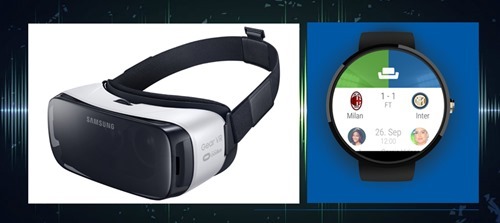
Modern technology is a lot like patent filings: it gives us a glimpse into what the future might look like but provides no guarantees of follow-through for any of it. While evolutionary by nature: one idea builds on another, much of our technological meanderings culminate in technological dead ends.
That said, even failures tell us something about technological progress. Looking back, it tells us where we tried to go, and perhaps something about human limits. Because while human imagination is limitless, human physiology is not. Sometimes technology cannot be advanced any further because it has reached the ideal form for human interaction.
Currently, there are three interesting consumer technologies that may or may not be successful in the form we have them right now, but might be telling us a lot about where we are going in the near and mid-term future. Even if this tech ends up being a market failure, there is a good chance we haven’t seen the last of it:
Smartwatches
It is not certain that the current spate of smartwatches will ever get past the novelty stage. They probably represent a big enough market to stick around for a highly interested niche. But the future of smartwatches in general is uncertain.
That is partly why the category of smart watches is so exciting. They already serve as GPS, fitness trackers, medical research accessories, timers, calculators, personal assistants, and much more. That’s what they are right now. The limits of what they can be in the future have barely been explored.
The really interesting thing about smartwatches is less about what they are, and more about what they could be. Right now, smartwatches have some health monitoring capabilities. But they could be game-changers if they could constantly monitor even more vitals and measures like glucose and blood oxygen. They could become true, early warning health systems.
Wrist notifications are the killer app. And it is just a matter of time to see what all these devices can proactively notify us of without reference to another device we happen to have, like a compatible smartphone. As an accessory to smartphones, smartwatches are great. As stand-alone life-saving assistants, they would shift the paradigm.
AR/VR
What exactly is wrong with reality? For some reason, some people want to augment it or virtualize it, or both. On the virtual side of the equation is Facebook, HTC, Sony, and Google. Microsoft is trying to prepare offerings for both. But for now, they have a product on the market for augmented reality with no real contenders. But Apple has expressed an interest in AR.
There are many downsides to both technologies. So far, VR is all about gaming. Some of it is quite engaging. While some is just nauseating. How many ways do we need to kill fake aliens and monsters? AR is more promising with regard to more utility. Which is better depends on whether you want holodecks or subtitles for the world.
Right now, AR/VR is either too expensive on the high end, too cheap on the low end so as to provide a bad user experience, too involved, requiring a powerful PC, and too dorky as in running around with a smartphone strapped to your face. This generation of product is not very interesting. But the future is the prize of the company that gets to the next generation first.
Computer Speech
Right now, the tech world is agog with artificial intelligence. But the thing that will get people talking to the computer is a computer that can talk back with human-like speech.
Adobe has demoed a tool that can do for the spoken word what Photoshop does for photos. After about 20 minutes of voice sampling, you can input any text and have it spoken in the voice of another person. It is not a computer simulated voice. It is the person’s speaking voice.
What this kind of technology can do for accessibility is incalculable. And it is just around the corner. Adobe’s vision is not big enough to encompass the real possibilities. That is also what makes smartwatches and AR/VR so exciting. The full set of possibilities has yet to be imagined.